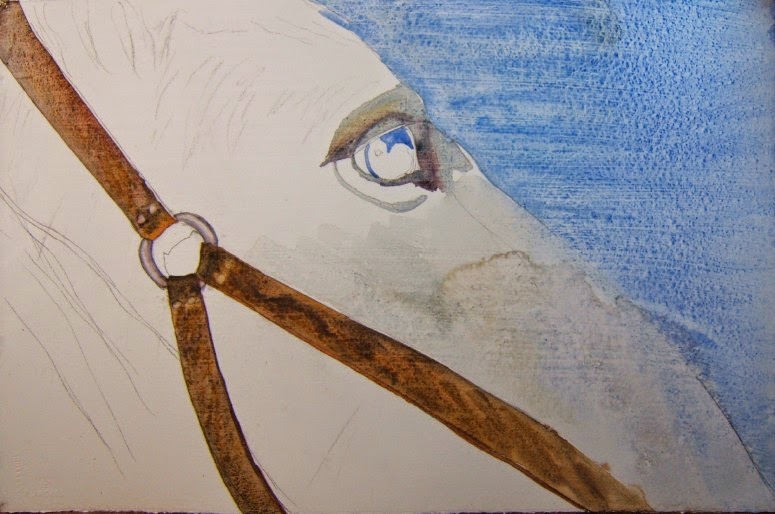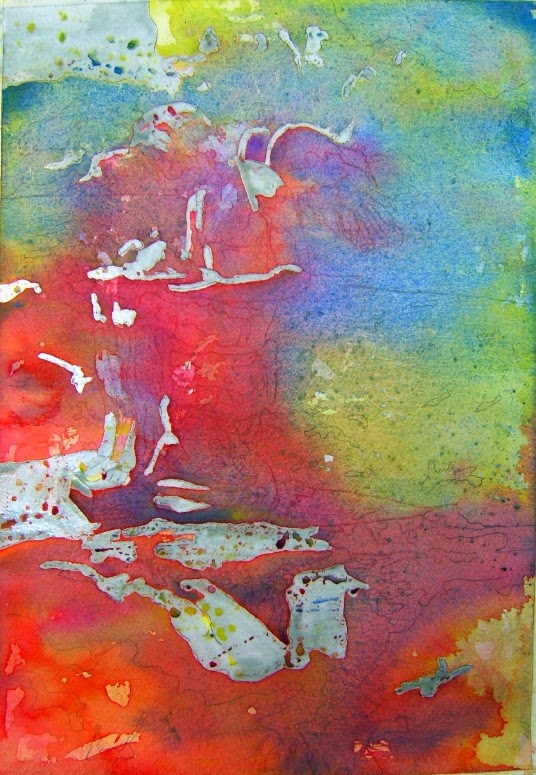Class Tuesday consisted of just one student - so she got personalized attention and seemed to enjoy it and get more done!
And she learned a bit about the difference between transparent and opaque pigments and how to test them:
Take a black marker (permanent, waterproof), and make a line down your watercolor paper. Mix your color/pigment with water and paint a swatch over the line. If the color dries and you can see the black marker line perfectly = transparent color. If the color dries and you can see the pigment cloudy or chalky over the black marker line = opaque. She tested several yellows and blues, and a few reds to choose her primary colors for her first pours.
I painted more on my berries and leaves after she left, but they are looking stiff to me. Not very pretty and, at this point, I think I would have to go in with fluid acrylic to get the berries to pop. Probably won't do more to it, though.
AND HAVE A VERY HAPPY HALLOWEEN!












































